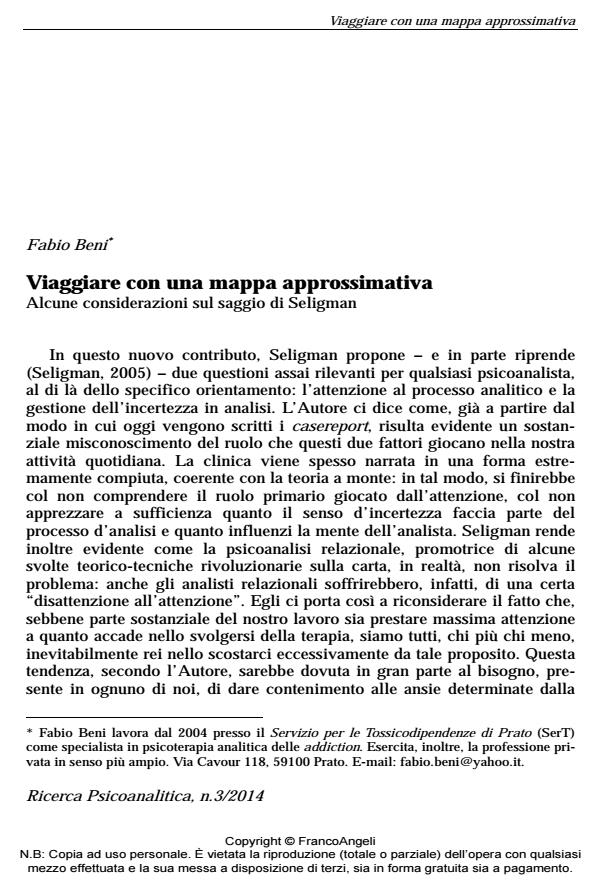Traveling with an approximate map
Journal title RICERCA PSICOANALITICA
Author/s Fabio Beni
Publishing Year 2014 Issue 2014/3
Language Italian Pages 8 P. 39-46 File size 41 KB
DOI 10.3280/RPR2014-003004
DOI is like a bar code for intellectual property: to have more infomation
click here
Below, you can see the article first page
If you want to buy this article in PDF format, you can do it, following the instructions to buy download credits

FrancoAngeli is member of Publishers International Linking Association, Inc (PILA), a not-for-profit association which run the CrossRef service enabling links to and from online scholarly content.
The Author analyzes Seligman’s paper dedicated to complexity and uncertainty in the analytical process. In particular, the A. stresses the importance of managing the certainty of those hypercyclic recursivities typically present in some areas of psychopathology, often at the beginning of a possible treatment. In addition, the A. discusses Seligman’s considerations on the negative effects of the analyst’s rigid affiliation to a specific theory on maintaining analytical attention. The A. then suggests adopting a dialectic mental approach that entails a reflection permanently suspended between a "scientific" position and an "artistic" idea of psychoanalysis. This would reduce the risk of a scientistic or wild drift.
Keywords: Seligman, complexity, uncertainty, hypercycle, attention, psychoanalysis
Fabio Beni, Viaggiare con una mappa approssimativa in "RICERCA PSICOANALITICA" 3/2014, pp 39-46, DOI: 10.3280/RPR2014-003004